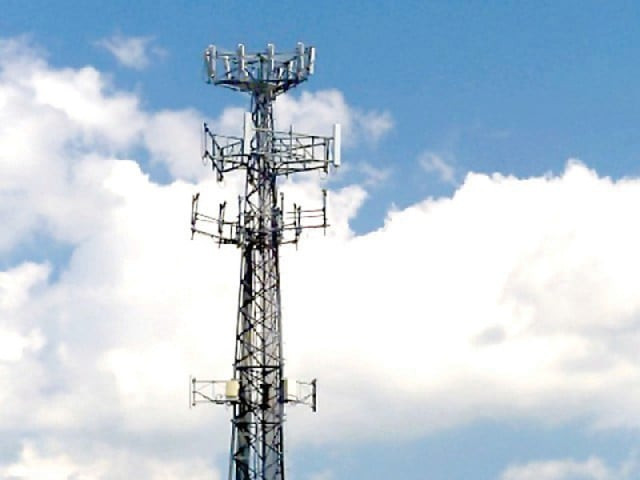Role of public-private partnership
Will help overcome the ‘backhaul’ challenge while providing steady broadband internet service to consumers

PHOTO: FILE
We are all rejoicing at the recent phenomenal rise in the number of broadband users in Pakistan after the launch of 3G and 4G mobile broadband. Mobile broadband users have risen from 1.9 million in June 2014 to 13.5 million in June 2015, according to the Pakistan Telecommunication Authority (PTA).
The rapid uptake also confirmed that once people get the taste of broadband internet they want even higher speed. That is already a big challenge.
Those of us who are in this field know that with such rapid increase, unless some issues are addressed, the quality is soon impacted. The biggest among those issues is the bottle-neck of the backhaul.
How the network works
The signal that you send or receive via the 3G/4G towers travels to/from the far-end to the towers over the backhaul network.
All the backhaul networks in Pakistan were designed to carry voice signals over microwave links. As the towers are being upgraded to deliver 3G/4G broadband signals, the low-capacity backhaul (also called middle-mile) networks of yesterday are only going to work well as long as the load of 3G/4G users remains relatively low.
With time, not only the number of users will increase but individual users will also start consuming more bandwidth, and that is when the quality would start deteriorating.
There would be capacity issues on the side of the last-mile too, but those can be addressed by the mobile operators through introduction of new mini cell-sites, and by off-loading the data-load on to WiFi hotspots.
It is to address capacity issues at the far side of the towers that things become a little bit more complicated, mainly because microwave links can only be expanded up to a limit.
Optic fibre cables
The possibility of transmitting enormous amount of bandwidth is now available only due to optic fibres. Today’s optic fibre cables are crisscrossing the oceans connecting continents and countries around the world.
Pakistan started with the deployment of optical fibres both in the long distance and metropolitan areas in order to connect exchanges with each other in the 1980s. Despite the fact that the country has three local optical fibre cable manufacturing plants, the overall penetration in the country has been lacking.
We have only 5% towers connected with optic fibre backhaul. For comparison, in Thailand the ratio is nearly 90%.
In metropolitan areas, optic fibre cables are laid in forms of rings called ‘metro fibre rings’. This is because the intelligent electronics makes it possible for data to flow unhindered from another direction if the fibre is cut at any one place.
These fibre rings connect the users with the national/international fibre backbones.
Local broadband service providers are particularly important; as they are actually small entrepreneurs who crop up if inexpensive bandwidth becomes available, for instance, from a fiber ring passing nearby. They use unlicensed WiFi spectrum to deliver inexpensive broadband to households and small businesses within their localities, because the marginal cost of rolling out WiFi services on top of a metro fiber network is rather low.

In short, optic fibre rings not only provide high bandwidth to 3G/4G towers, but also stimulate entrepreneurship in the last-mile, which, in turn creates employment opportunities.
Elsewhere
On the African continent this year, metro optic fiber services have been announced in Zambia, Zimbabwe, Rwanda, Kenya, South Africa and Nigeria. In Uganda, under the ‘Project Link’ Google has invested in laying 100 km metro fibre in Kampala, that is accessible to all last-mile service providers without discrimination.
Our Problem
We too, need similar fibre rings for the reasons explained above, despite the fact that we already have PTCL fibre buried in our cities.
PTCL fibre rings do not cover enough parts of our cities and the company itself is in the last-mile business.
A decade ago an umpteen number of privately owned last-mile DSL service providers tried to ride on the then newly “unbundled” copper cables, in competition to PTCL last-mile services. Since PTCL was also their wholesale metro bandwidth provider, gradually all of them went out of business.
I do not blame PTCL that its ownership of metro fibre actually acts as an entry barrier for smaller last-mile service providers. Unfortunately, PTCL cannot become that ‘carrier of carriers’ that we need today.
That is why a neutral entity is needed that owns and operates metro fibre through which access to broadband becomes available to all those who desire.
But to do something on these lines, is it within the resources of the government? Particularly when the government has many more pressing socio-economic needs to attend to?
The solution
This dilemma could perhaps be solved by employing the Public Private Partnership (PPP); a mechanism by which the government utilises the private sector efficiencies to deliver services which would otherwise have been provided by the public sector.
Instead of the public sector procuring a capital asset and providing a service, the private sector invests to create the asset through dedicated standalone business, and then delivers the service while charging the users of the service to recover the investment profitably.
The selection of the private sector service provider is done through competitive bidding. The bidders are required to give commitments regarding quality standards and the tariffs that they would charge the users. On its part, the government could chip in with free Right-of-Way, which is of great value in any such enterprise.
PPP Policies on the federal and provincial levels already exist. Federal, provincial, or city governments could take up such a venture. Public consultation process may be launched to elicit opinions of stakeholders and general public before the necessary detailed framework is created. Before going full scale for its implementation, the framework should be put to test in a small pilot city.
The writer is former CEO of the Universal Service Fund and is providing ICT consultancy services in several countries of Africa and Asia
Published in The Express Tribune, August 24th, 2015.
Like Business on Facebook, follow @TribuneBiz on Twitter to stay informed and join in the conversation.



















COMMENTS
Comments are moderated and generally will be posted if they are on-topic and not abusive.
For more information, please see our Comments FAQ